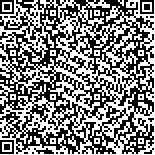| 引用本文: | 魏士亮,皮久,张涛,李文知.旋转超声磨削Si3 N4陶瓷用金刚石磨具磨损行为研究[J].材料科学与工艺,2023,31(1):10-17.DOI:10.11951/j.issn.1005-0299.20220048. |
| WEI Shiliang,PI Jiu,ZHANG Tao,LI Wenzhi.Wear behavior of diamond abrasives used in rotary ultrasonic grinding of Si3N4 ceramics[J].Materials Science and Technology,2023,31(1):10-17.DOI:10.11951/j.issn.1005-0299.20220048. |
|
| 摘要: |
| 热压烧结Si3N4陶瓷材料常应用于航天飞行器中关键耐高温零部件,但由于高硬度和低断裂韧性,其加工效率和加工表面质量难以满足制造需求。为了提高热压烧结Si3N4陶瓷旋转超声磨削加工质量,减小由于金刚石磨具磨损带来的加工误差,开展了磨具磨损行为研究。基于热压烧结Si3N4陶瓷旋转超声磨削加工实验,分析了金刚石磨具磨损形式;基于回归分析建立了金刚石磨具磨损量数学模型,揭示了加工参数及磨具参数与金刚石磨具磨损量间映射关系;并研究了磨损形式与磨具磨损量及加工表面粗糙度影响规律。结果表明:磨粒磨耗是旋转超声磨削Si3N4陶瓷用金刚石磨具最主要磨损形式,比例超过50%;主轴转速和磨粒粒度对磨具磨损量影响最为显著;且磨损量较小时,加工表面粗糙度值反而增加。以上研究可为提高旋转超声磨削Si3N4陶瓷加工精度和加工质量提供指导。 |
| 关键词: 旋转超声磨削 金刚石磨具 磨损形式 磨损量 回归分析 表面粗糙度 Si3N4陶瓷 |
| DOI:10.11951/j.issn.1005-0299.20220048 |
| 分类号:TH16 |
| 文献标识码:A |
| 基金项目:国家自然科学基金资助项目(51705111);黑龙江省自然科学基金资助项目(LH2019E061) |
|
| Wear behavior of diamond abrasives used in rotary ultrasonic grinding of Si3N4 ceramics |
|
Shiliang WEI1,2, Jiu PI1, Tao ZHANG1, Wenzhi LI1
|
|
1.Key Laboratory of National and Local United Engineering for High-Efficiency Cutting and Tools, Harbin University of Science and Technology, Harbin 150080, China;2.Centre of Micro/Nano Manufacturing Technology, Tianjin University, Tianjin 300072, China
|
| Abstract: |
| Hot-pressed sintered Si3N4 ceramic materials are used in key high-temperature resistant components of aerospace vehicles, but their processing efficiency and surface quality cannot meet manufacturing needs due to high hardness and low fracture toughness. The abrasive wear behavior was investigated to improve the machining quality of hot-pressed Si3N4 ceramics by rotary ultrasonic grinding and reduce the machining error caused by diamond abrasive wear. The wear patterns of diamond abrasives were analyzed by rotary ultrasonic grinding experiments of hot-pressed Si3N4 ceramics. On the basis of regression analysis, a mathematical model of wear of diamond abrasives was established, and the mapping relationship between machining parameters, abrasive parameters, and wear of diamond abrasives was revealed. The influence of wear patterns on abrasive wear and machined surface roughness was studied. Results show that abrasive wear was the main wear pattern of diamond abrasives used in rotary ultrasonic grinding of Si3N4 ceramics, and the ratio exceeded 50%. The spindle speed and abrasive particle size had the most significant effects on abrasive wear amount. When the wear amount was small, the roughness value of machined surface increased. The research provides guidance for improving the machining accuracy and quality of Si3N4 ceramics by rotary ultrasonic grinding. |
| Key words: rotary ultrasonic grinding diamond abrasives wear pattern wear amount regression analysis surface roughness Si3N4 ceramic |






